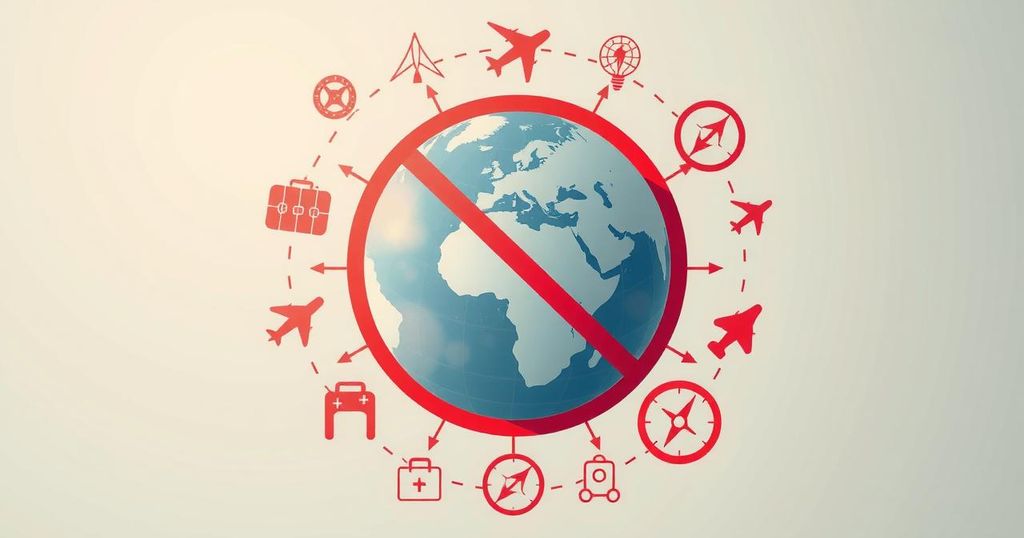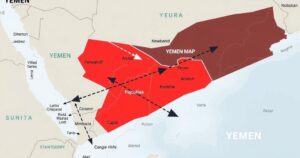Mexico Added to U.S. “Do Not Travel” List Amid Rising Security Risks

The U.S. places specific regions in Mexico on its “Do Not Travel” list due to escalated violence and crime, aligning it with nations like Russia and Iran. The tourism industry faces major disruptions, with cruise lines halting operations in these areas and a potential economic impact on Mexican tourism. Travelers are urged to stay informed and consider safer destinations amidst evolving security threats.
The United States has classified specific regions in Mexico as high-risk areas, now added to the “Do Not Travel” list, which includes other nations such as Russia and Iran due to security concerns. This designation is primarily attributed to rampant violent crimes, kidnappings, and cartel activities, creating a perilous environment for potential travelers. As such, U.S. citizens are advised to reconsider their travel plans to these affected regions.
The advisory impacts the tourism industry significantly, leading cruise lines, like Royal Caribbean, to terminate trips to high-risk zones, while airlines may alter flight routes to enhance safety. Economically, Mexico’s tourism sector may suffer, especially in states experiencing severe violence. Consequently, travelers are urged to stay informed about the evolving risks and explore safer alternatives.
The U.S. government has flagged five Mexican states as particularly dangerous for visitors, compounded by an increase in homicides, armed robberies, and gang violence. Travel restrictions for U.S. government employees underscore the seriousness of these threats, highlighting how dangerous some regions have become. The list also includes countries marked by war and terrorism, emphasizing the need for caution.
In addition to Mexico, various nations like Gaza, Israel, Ukraine, and North Korea remain unsafe due to ongoing military conflicts, terrorism issues, and civil unrest. The advisory urges citizens to avoid regions experiencing escalating violence and instability. Of particular note are countries like Iran and Iraq, notorious for wrongful detentions and targeted violence against U.S. citizens.
Travelers should heed these precautions: stay updated via official travel advisories, enroll in the Smart Traveler Enrollment Program (STEP) for critical alerts, and have a viable exit plan should the situation deteriorate. While some areas in Mexico are still safe for tourism, it is paramount for travelers to stay vigilant about their destinations and adhere to the latest advisories from the U.S. Department of State.
In conclusion, the inclusion of Mexico in the U.S. “Do Not Travel” list calls for heightened caution among U.S. travelers. Although certain locations in Mexico maintain their safety, many areas have become untenable due to violence. It is advisable for international travelers to verify travel advisories before planning any trips, ensuring personal safety is prioritized amid escalating global security risks.
The classification of certain regions in Mexico within the U.S. “Do Not Travel” list underscores significant concerns regarding safety due to violence and crime. This designation mirrors similar threats faced by other nations recognized for their geopolitical instability. The implications for tourism are severe, as increased risks may deter travelers and impact local economies. Understanding the context of these advisories is essential for informed decision-making regarding international travel.
The recent advisory highlights the urgent need for caution amongst travelers, particularly regarding destinations previously considered safe. Mexico’s addition to the list of high-risk nations signals a shift in the security landscape that travelers must navigate. Future travel plans should include comprehensive checks of the U.S. Department of State’s travel advisories to ensure safety and preparedness.
Original Source: www.travelandtourworld.com








